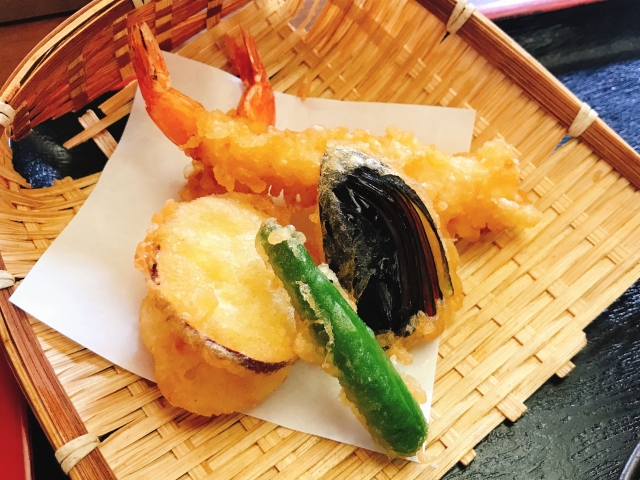The second group of Japanese verbs is called a one-step verb.
If it ends with the sound “iru” or “eru”, it is usually a one-step verb. Here are some commonly used Japanese verbs that look like one-tier, but are actually five-tiered.
The one-step verb also follows a simple conjugation pattern that is somewhat similar to the five-step verb. The following is a verb conjugation diagram of Japanese one-step verbs.

Click here to learn Japanese language with the best one-on-one Japanese tutoring lessons in person or online.
食べる たべる taberu (to eat)
食べ たべ tabe Base 1
食べ たべ tabe Base 2
食べる たべる taberu Base 3
食べれ たべれ tabere Base 4
食べよう たべよう tabeyou Base 5
食べて たべて tabete Base “te”
食べた たべた tabeta Base “ta”
Base 1 and Base 2: As you can see, Base 1 and Base 2 are the same. Similar to the Godin verb, you can create a negation by adding -nai (eg tabenai-I don’t eat). This base or root form is also used for the formal form of the verb.
Bass 3: Bass 3 is the same as the Godin verb.
Bass 4: Bass 4, however, cannot be used alone like the Godin verb. Used only for “if verbs” by adding -ba. (Example: tabereba-If you eat …) It is not a low command form of a one-step verb. The low command format for one-step verbs is Base1 + ro.
Bass 5: Bass 5 is the same as the Godin verb.
Bass “te” and Bass “ta”: The form of the Bass “te” and “ta” for the Ichidan verb is much simpler than the Godin verb. Simply remove the “ru” and add “te” to the base “te” and “ta” to the base “ta”. These have the same function as the Godin verb.
This is a one-step verb. Take advantage of what you have just learned on a piece of paper.
いる いる iru to exist (animate), to be somewhere
見る みる miru to see
寝る ねる neru to sleep
着る きる kiru to wear, put on
出来る できる dekiru can do
覚える おぼえる oboeru to remember
Irregular verb
The last type of verb is an irregular verb, but remember the table below as there are only two in the whole language. The first is to do (do something). Many nouns can be used as verbs simply by adding “do” immediately after them. Probably the most commonly used Japanese verb. The second irregular verb is coming.
する する suru (to do)
し し shi Base 1
し し shi Base 2
する する suru Base 3
すれ すれ sure Base 4
しよう しよう shiyou Base 5
して して shite Base “te”
した した shita Base “ta”
The functionality of these basses is the same as for the Godan verbs, except that bass 4 can only be used as an “if verb”.
The rude command form is “white”.
来る くる kuru (to come)
来 こ ko Base 1
来 き ki Base 2
来る くる kuru Base 3
来れ くれ kure Base 4
来よう こよう koyou Base 5
来て きて kite Base “te”
来た きた kita Base “ta”
The functionality of these basses is the same as for the Godan verbs, except that bass 4 can only be used as an “if verb”.
The rude command form is “carp” and should really only be used on animals.
日本語の動詞の2番目のグループは一段(一段)動詞と呼ばれます。 「iru」または「eru」という音で終わる場合、通常は一段動詞です。一段のように見えるが、実際には五段である、よく使われる日本語の動詞がいくつかここにリストされています。一段動詞も、五段動詞とやや似た単純な活用パターンに従います。以下は、日本語の一段動詞の動詞活用図です。
食べるたべるたべる(食べる)
食べたべたべベース1
食べたべたべベース2
たたべるたべるベース3
食べれたべれたべれベース4
食べようたべようたべようベース5
食べてたべてたべてベース「て」
食べたたべたたべたベース「た」
ベース1とベース2:ご覧のとおり、ベース1とベース2は同じです。ゴダン動詞と同じように、-nai(例:tabenai-私は食べません)を追加することで否定を作成できます。このベースまたはルート形式は、動詞の正式な形式にも使用されます。
ベース3:ベース3は、ゴダン動詞と同じです。
ベース4:ベース4は、ただし、ゴダン動詞のように単独で使用することはできません。 -baを追加することにより、「if動詞」にのみ使用されます。 (例:tabereba-食べたら…)一段動詞の低コマンド形式ではありません。一段動詞の低コマンド形式はBase1 +ろ(ro)です。
ベース5:ベース5は、ゴダン動詞と同じです。
ベース「te」とベース「ta」:イチダン動詞のベース「te」と「ta」の形式は、ゴダン動詞よりもはるかに簡単です。 「ru」を外して、ベース「te」に「te」、ベース「ta」に「ta」を追加するだけです。これらは、ゴダン動詞と同じ機能を持っています。
これが一段の動詞です。あなたが今学んだことを使って一枚の紙にそれらを活用してみてください。
漢字-漢字ひらがな-ひらがなロマジ
(英字)英語の意味
存在する(アニメートする)、どこかにある
見るためミル
寝るねるねる寝る
着るきるキル着て着る
俺ができる
覚える覚えるおぼえるおぼえる
不規則動詞
最後のタイプの動詞は不規則動詞ですが、言語全体で2つしかないので、以下の表を覚えておいてください。 1つ目はする(何かをする)です。多くの名詞は、その直後に「する」を付けるだけで動詞として使用できます。おそらく、日本語の動詞の中で最もよく使われています。 2番目の不規則動詞はくる(来る)です。
するするする(する)
しししベース1
しししベース2
するするするBase3
すれすれ確かにベース4
連結しようベース5
しててシテベース「て」
できた下ベース「た」
これらのベースの機能は、ベース4が「if動詞」としてのみ使用できることを除いて、Godan動詞の場合と同じです。
失礼なコマンドフォームは「シロ」です。
来るくるくる(来る)
来ここベース1
来ききベース2
来るくるくるBase3
来れくれくれBase4
来ようこゆベース5
来てきて凧ベース「て」
来たれ北ベース「た」
これらのベースの機能は、ベース4が「if動詞」としてのみ使用できることを除いて、Godan動詞の場合と同じです。
失礼なコマンドフォームは「鯉」であり、実際には動物にのみ使用する必要があります。

Now that I know about 30 Japanese verbs and can use them, I will explain what you can do with those verbs. The following table applies to all Japanese verbs unless otherwise noted.
Base 1 ない Base 1 nai plain form negative (will not verb)
Base 1 なかった Base 1 nakatta plain form past negative (did not verb)
Base 2 ます Base 2 masu polite form present/future tense
Base 2 ました Base 2 mashita polite form past tense
Base 2 ません Base 2 masen polite form negative (will not verb)
Base 2 ませんでした Base 2 masen deshita polite form past negative (did not verb)
Base 2 たい Base 2 tai want to verb (add です (desu) to make it polite)
Base 3 Base 3 plain form present/future tense
Base 4 ば Base 4 ba if verb
Base 4 る Base 4 ru plain form can verb (Godan verbs only)
(verb now becomes an Ichidan verb)
Base 4 ます Base 4 masu polite form can verb (can be changed like above)
Base 5 とする Base 5 to suru try to verb
Base “te” 欲しい Base “te” hoshii want someone else to verb
Base “te” Base “te” plain form command
Base “te” 下さい Base “te” kudasai polite form command
Base “te” いる Base “te” iru plain form presently verbing
Base “te” います Base “te” imasu polite form presently verbing (can be changed like above)
Base “ta” Base “ta” plain form past tense
Base “ta” ら Base “ta” ra if and when I verb (similar to Base 4 ba)
Base “ta” りする Base “ta” ri suru do such things as…
Related article:










